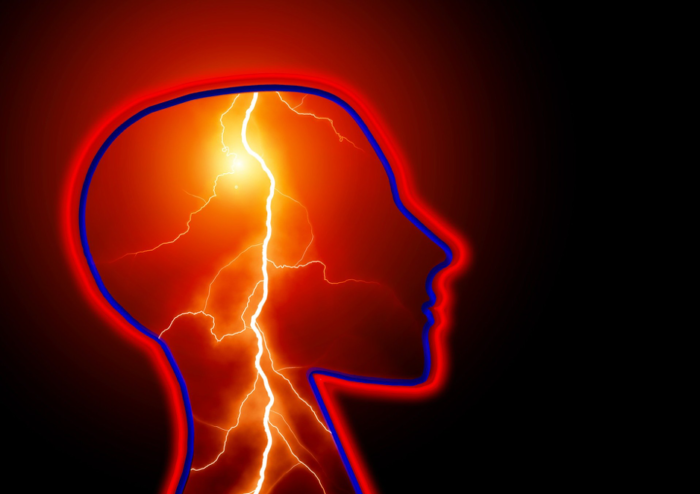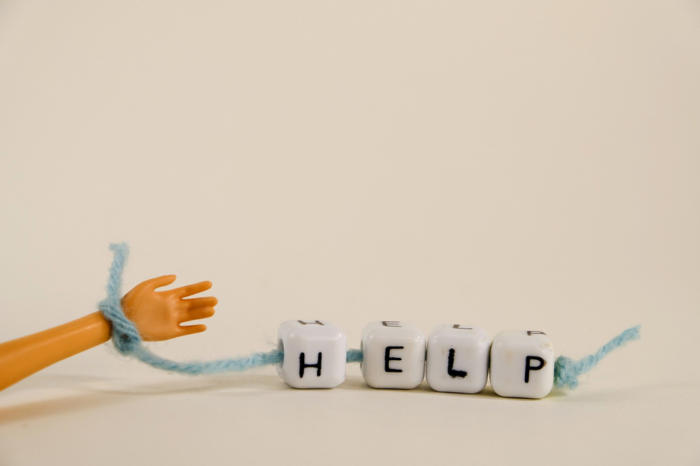by Maureen Abson

Having a stroke is a very frightening thing to happen to someone, they can seemingly come from nowhere. Someone may one moment be going about their everyday business and the next moment be unable to move, speak or communicate. An emergency admission to hospital should always follow and the sooner someone is treated, the better the prognosis.
As massage practitioners we may be asked to treat someone who has had a stroke and we should know what we are dealing with before we decide how to treat someone – and importantly whether or not we should treat someone at all.
A stroke is a brain attack which happens when the blood supply to part of the brain is cut off, as the brain’s blood supply carries essential nutrients and oxygen to the brain, when this supply is cut off brain cells can be damaged or die. Where this damage occurs and how large an attack it is will determine the effect on the individual this has.
There are three main types of stroke.
Ischaemic stroke – this is the most common and is caused by a blockage cutting off the blood supply to the brain.
A Haemorrhagic stroke is caused by bleeding in or around the brain.
A transient ischaemic attack or TIA is also known as a mini-stroke. It is the same as a stroke, except that the symptoms last for a short amount of time (no longer than 24 hours) and with a TIA the blockage that stops the blood getting to the brain is temporary.
The Stroke Association say of the prognosis of strokes: All strokes are different. For some people the effects may be relatively minor and may not last long. Others may be left with more serious problems that make them dependent on other people. Unfortunately not everyone survives – around one in eight people die within 30 days of having a stroke. That’s why it’s so important to be able to recognise the symptoms and get medical help as quickly as possible. The quicker you receive treatment, the better your chances for a good recovery .
The Signs and Symptoms of a stroke are worth recognising in case a client has a stroke during a treatment, immediate emergency medical attention is critical.
Signs and symptoms
The main symptoms of stroke can be remembered with the word FAST: Face-Arms-Speech-Time.
Face – the face may have dropped on one side, the person may not be able to smile or their mouth or eye may have dropped.
Arms – the person with suspected stroke may not be able to lift both arms and keep them there because of arm weakness or numbness in one arm.
Speech – their speech may be slurred or garbled, or the person may not be able to talk at all despite appearing to be awake.
Time – it is time to dial 999 immediately if you see any of these signs or symptoms .
One other symptom to look for is the tongue, you can ask the person to stick their tongue out, if it is crooked or goes to one side, assume it is a stroke and get help quickly.
Who is at risk?
In the UK, strokes are a major health problem. Every year, around 110,000 people have a stroke in England and it is the third largest cause of death, after heart disease and cancer. The brain injuries caused by strokes are also a major cause of adult disability in the UK.
Older people are most at risk of having strokes, although they can happen at any age – including in children.
If you are South Asian, African or Caribbean, your risk of stroke is higher. This is partly because of a predisposition (a natural tendency) to developing high blood pressure (hypertension), which can lead to strokes.
Smoking, being overweight, lack of exercise, too much alcohol and a poor diet are also risk factors for stroke, as are high cholesterol, atrial fibrillation and diabetes .
Specific Contraindications
If someone arrives for a massage treatment displaying symptoms of a stroke do not treat them, call an ambulance immediately, delaying treatment may be fatal and will certainly have a life changing impact.
Never massage someone during the first month after a stroke as there is a high risk of a second stroke occurring within one month of the first. This is worth repeating, massage is completely contraindicated during the first month after a stroke. This is lessened, but is still a risk, during the first 6 months so it is critical to work with the client’s medical team before treatment. A second stroke is more often caused by clots in the vessels in the neck so avoid neck massage during the first 6 months and until you have been able to consult with the client’s medical practitioner.
Strokes have also been attributed to high velocity thrusts to the neck so these should only be carried out by a fully qualified chiropractor.
Massage Treatments
Massage will usually be part of recovery long after an individual has been discharged from hospital and as part of a team of physiotherapists, occupational therapists, speech therapists and other health care practitioners. In practice you may not even see a client with problems after a stroke until they have been discharged from most of their rehabilitation focused after-care and have been left to try to manage their care and the aftermath of their stroke.
It is critical to work with the client’s medical practitioner and to take full account of their medication. Many people recovering from a stroke will be on blood thinning medication to help prevent another stroke and will therefore bruise easily, so gentle massage is important – this needs to be light, focused massage rather than deep tissue.
Dietrich W. Miesler suggests that before you begin to work with a stroke patient, you first should do a little meditation. Try to fathom what a devastating experience it must be for the client to suddenly lose consciousness and after anywhere from five minutes to several days, wake up and be unable to move or speak anymore. Imagine feeling like your head is going to burst, and if you call for help, all you can produce is a gurgling sound. Imagine being unable to move a whole side of your body — to feel like you have been kidnapped, bound and gagged, and to feel a terrible fear creeping up as you have no idea what happened to you .

Paralysis after a stroke can take two forms; flaccid paralysis and spastic paralysis. Flaccid paralysis is where the brain damage means that there is no nerve impulse transmitted down the limbs which means the muscles receive no signals to move, this causes the limb to wither and hang lifelessly. In arms this can contribute to shoulder strain as the arm hangs heavy with no shoulder-joint muscle tone. If it is a leg that is affected then it can give problems in the hips and lower back.
Spastic paralysis occurs when the muscles respond but without control, this can be very painful as the flexors are the stronger muscles so limbs can turn inwards and curl. If this continues long term then it results in shortened tendons, this can then impact on the joints and can cause ossification of the joints, particularly in the knee, elbow and wrist – when that occurs bone is effectively laid down in other areas, specifically in connective tissue. When this happens fingers and toes can curl tight with the thumb being pulled across the palm, the same happens in the legs but is usually a bit less obvious.
Massage treatment should be aimed at stretching out and soothing muscles that are contracting and tight and in releasing areas that are impacted – not just as a direct result of the stroke, but also other areas that are impacted by this damage as detailed above. As a stroke can be such a life-changer then depression can be a real issue for many people and massage can be given as part of treatment for this.
Sadly your massage treatment is not going to undo the damage caused by the stroke, but it can help to mitigate some of the effects of it and provide an important sense of connectivity as the client journeys towards recovery and provides gentle therapeutic touch at a time when the majority of touch can be either more clinical or involving person care. As practitioners we are in a unique position to help and allow the person to regain some trust in their own bodies.
Maureen Abson is the senior teacher at Fusion Massage Training and teaches more about practical stroke rehabilitation on her Advanced Diploma, a ThinkTree accredited 5 day CPD course for existing therapists. www.fusionmassage.com
https://www.stroke.org.uk/what-stroke/what-stroke http://www.nhs.uk/Conditions/Stroke/Pages/Introduction.aspx
ibid http://www.massagetherapy.com/articles/index.php/article_id/298/Stroke-Rehab-Part-2